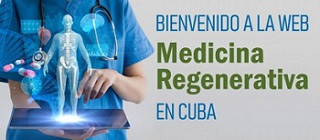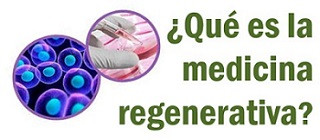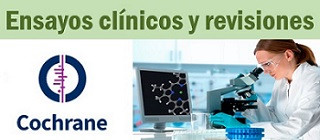Nenad Bursac
Abstract
The clinical use of stem cells, such as bone marrow-derived and, more recently, resident cardiac stem cells, offers great promise for treatment of myocardial infarction and heart failure. The epicardium-derived cells have also attracted attention for their angiogenic paracrine actions and ability to differentiate into cardiomyocytes and vascular cells when activated during cardiac injury. In a recent study, Chong and colleagues have described a distinct population of epicardium-derived mesenchymal stem cells that reside in a perivascular niche of the heart and have a broad multilineage potential. Exploring the therapeutic capacity of these cells will be an exciting future endeavor.
Los medicamentos de quimioterapia pueden matar rápidamente a las células cancerosas pero también tienen efectos en el tejido sano del paciente.
Por ejemplo, el tratamiento puede destruir a la médula ósea, que se encarga de producir nuevas células sanguíneas.
Los científicos del Centro de Investigación de Cáncer Fred Hutchinson, en Estados Unidos, lograron crear un “escudo” de células madre para proteger la médula ósea de los pacientes sometidos a la terapia. Lo hicieron modificando las propias células madre sanguíneas del paciente y trasplantándolas para proteger a este tejido.
Dos de los pacientes sobrevivieron más tiempo del pronosticado y el tercero continuaba vivo tres años después del tratamiento y sin progresión de la enfermedad.
El enfoque, afirman los expertos, es “completamente innovador”.
Tejido susceptible
El organismo constantemente produce nuevas células sanguíneas en la médula ósea, que se encuentra en el interior de los huesos largos.
Sin embargo, este tejido es uno de los más susceptibles al tratamiento de quimioterapia.
Estos fármacos provocan una reducción en la producción de glóbulos blancos, lo cual incrementa el riesgo de infección en el paciente.
También se reduce el número de glóbulos rojos, que se encargan de transportar el oxígeno en la sangre, lo cual produce falta de aliento y cansancio en la persona.
Estos efectos, afirman los científicos, son uno de los mayores obstáculos en el uso de la quimioterapia y a menudo el tratamiento debe ser detenido, retrasado o reducido hasta que el paciente mejore.
Y hasta ahora no se ha encontrado un tratamiento de cáncer que sea tan efectivo como la quimioterapia.
En el nuevo estudio, los científicos se centraron en pacientes con glioblastoma, una forma de cáncer cerebral que casi siempre es mortal.
Los investigadores extrajeron médula ósea de los pacientes y aislaron las células madre.
Escudo de células madre
Posteriormente utilizaron un virus para “infectar” a las células con un gen que es capaz de protegerlas de los efectos tóxicos de la quimioterapia.
Y después trasplantaron nuevamente estas células madre modificadas en el paciente.
“La quimioterapia dispara tanto a las células del tumor como a las células de la médula ósea, pero al colocar escudos protectores en las células de la médula ósea estas quedan protegidas mientras que las células del tumor están desprotegidas”, explica la doctora Jennifer Adair, una de las investigadoras.
Por su parte el profesor Hans-Peter Kiem, quien dirigió el estudio, afirma que “encontramos que los pacientes que recibieron el trasplante de células madre modificadas con el gen fueron capaces de tolerar mejor la quimioterapia y sin efectos secundarios negativos que los pacientes que en estudios previos habían recibido el mismo tipo de quimioterapia sin el trasplante de células madre modificadas”.
Según los científicos, los tres pacientes que participaron en el estudio sobrevivieron en promedio 22 meses después de recibir el trasplante.
La media de supervivencia de los pacientes con glioblastoma -sin el nuevo trasplante- es de poco más de 12 meses.
Uno de los pacientes continúa vivo 34 meses después de recibir el trasplante, afirman los científicos.
“El glioblastoma sigue siendo uno de los tipos de cáncer más devastadores, con una supervivencia promedio de sólo 12 a 15 meses”, dice el doctor Maciej Mrugala, quien también participó en la investigación.
Enfoque novedoso
Agrega que entre 50 y 60% de los pacientes con esta forma de cáncer desarrollan tumores resistentes a la quimioterapia, por lo cual el nuevo trasplante de células madre modificadas puede ser un tratamiento “aplicable” a un gran número de pacientes.
Y también podría beneficiar a pacientes con otras formas de tumores cerebrales, como el neuroblastoma, agrega.
Tal como expresa la profesora Susan Short, de la organización Cancer Research Uk, “este es un estudio muy interesante y un enfoque completamente innovador para proteger a las células sanas durante el tratamiento de cáncer”.
“Necesita ser probado en más pacientes pero podría significar que en el futuro podremos usar temozolomide (un fármaco de quimioterapia) en más pacientes con tumores cerebrales de los que pensamos”.
Los científicos creen que esta estrategia también podría eventualmente beneficiar a pacientes cuya médula ósea resulta afectada debido a otros trastornos, o para pacientes con VIH o SIDA en los cuales el trasplante podría incrementar el número de células resistentes al virus.
Los científicos están ahora reclutando a más pacientes para un ensayo clínico más amplio.
Fuente: BBC Salud
En: General ![]()
Regenerative Medicine
The explosion of interest in induced pluripotent stem cells has been fueled by their potential as a limitless source of cells to repair damaged tissues in any number of diseases. However, generating cells is only a small part of the problem; ensuring that these cells integrate into their new environment and function appropriately is now a more pressing challenge. In this issue’s Select, we focus on four recent papers that tackle this problem and find that new ways to stimulate endogenous regeneration are providing promising alternatives to restore organ function.
Article Outline
Reprogramming Goes Native in the Heart
Differentiation Drug Reconstructs Cartilage
A Cytokine for Immune Recovery
Restoring Sight
Articulo completo a través del HINARI
Cherry AB, Daley GQ.
Stem Cell Transplantation Program, Division of Pediatric Hematology/Oncology, Manton Center for Orphan Disease Research, Howard Hughes Medical Institute, Children’s Hospital Boston and Dana Farber Cancer Institute, Boston, MA 02115, USA.
Abstract
Although development leads unidirectionally toward more restricted cell fates, recent work in cellular reprogramming has proven that one cellular identity can strikingly convert into another, promising countless applications in biomedical research and paving the way for modeling diseases with patient-derived stem cells. To date, there has been little discussion of which disease models are likely to be most informative. Here, we review evidence demonstrating that, because environmental influences and epigenetic signatures are largely erased during reprogramming, patient-specific models of diseases with strong genetic bases and high penetrance are likely to prove most informative in the near term. We also discuss the implications of the new reprogramming paradigm in biomedicine and outline how reprogramming of cell identities is enhancing our understanding of cell differentiation and prospects for cellular therapies and in vivo regeneration.
Copyright © 2012 Elsevier Inc. All rights reserved.
Stem Cells and Spinal Cord Repair
Evan Y. Snyder, M.D., Ph.D., and Yang D. Teng, M.D., Ph.D.
N Engl J Med 2012; 366:1940-1942May 17, 2012
For the past couple of decades, clinicians have watched the stem-cell field with a mixture of anticipation and skepticism. No group of patients has been more expectant than those with spinal cord injuries. Therapies for spinal cord injury have been promised almost since the dawning of the stem-cell field. The recent launch — and abrupt termination — of a phase 1 clinical trial for acute spinal cord injury by the biotechnology company Geron whetted the appetite, and then fueled the frustration, of these patients.
A recent study by Sakai et al.1 is one of a series in this field. It is important in that it embraces concepts that were first introduced a decade ago2: namely, that spinal cord injury is not a monolithic entity but rather a series of concurrent and interacting pathological processes3; that multimodal actions will be required to combat the various facets of this malady; that stem cells, in fulfilling their fundamental teleologic role of maintaining homeostasis in a perturbed system, may be capable of intrinsically exerting many of these requisite multifaceted actions4; and that the stem cell may serve as the glue that bonds and focuses many of these multidisciplinary approaches. The authors observed that implantation of stem cells derived from human tooth pulp (a neural-crest derivative) into transected rat spinal cords led to functional improvement by reducing the death of neurons and glia, preserving axons and myelin sheaths, promoting regeneration of transected axons by down-regulating multiple growth inhibitors, and spurring the differentiation of stem cells into myelinating cells. Although such observations are not new to the neural stem-cell field, the appeal of the approach used by Sakai et al. lies in exploiting a stem-cell source that is both readily accessible from a living patient and is immunologically matched to the potential recipient, precluding the need for immunosuppressive drugs.
Although this study, like many in the field of spinal cord injury, is not without flaws, it provides an opportunity to coach clinicians (who can then inform their patients) about why research in spinal cord injury is so challenging. The cascade of pathological processes that characterize spinal cord injury unfolds in the context of a neuroanatomy that is complex, with connections and functions that have been rendered regionally discrete within a span of millimeters, if not microns, during a finely tuned process that is part of embryonic development. Despite attempts to standardize experimental models, procedures, readouts, and instruments, there can nevertheless be variability from animal to animal and investigator to investigator. The presence of spared fibers after transaction is often difficult to detect. Substantial degrees of spontaneous recovery that are not related to treatment can occur for reasons not entirely known or controllable. Certainly, much of this spontaneous recovery is attributable to the resolution of processes such as edema, inflammation, altered perfusion, shock, and transient channelopathies. It is also probably due to gradual behavioral compensation by the animal, redundancy in connections, and the disinhibition of certain intraspinal reflexive movements (so-called locomotion pattern generators5).
The field itself is inherently vulnerable to observer bias because it lacks adequate varieties of truly objective, quantifiable, discrete measures of spinal function attributable purely to single pathways. Other confounders include related maladies (e.g., pain, bladder and bowel dysfunction, muscle atrophy, osteopenia, skin breakdown, and fatigue); the unmonitored effects of learning, environmental stimulation, motivation, and rehabilitation; the effect of immunosuppressant drugs or use of experimental animals with immunodeficiency; the sex and strain of experimental animals; and in stem-cell transplantation, the fusion of donor cells with host cells, leading to the mistaken identification of a host cell as having come from the graft.
In addition, the field is plagued by an incomplete knowledge of the relative contributions of the multiple pathological events that unfold after trauma and thus is poorly guided as to which processes should be combated in order to restore or preserve function. Although it is clear that the crux of spinal cord injury is the interruption of cortical involvement in spinal-mediated processes through ascending sensory and descending motor connections, it is far more daunting to re-create circuitry than to preserve the intricate connections established during embryonic development. Interventions may be directed at providing trophic support or neutralizing toxins to prevent the death or impairment of neural tissue from secondary injury processes3 (e.g., excessive extracellular glutamate, inflammation, free radicals, ischemia, and impaired axonal transport); redressing conduction deficits by protecting or regenerating myelin sheaths or inducing the growth cones of axotomized fibers; suppressing scarring and inhibitors to neurite growth; preventing the formation of syrinx or bridging gaps; circumventing the injury through the promotion of alternative routes to the muscles, including sprouting from preserved neural fibers, replacing long connections with multiple shorter ones created from interneurons, harnessing local circuits within the cord,5 and constructing biosynthetic conduits2; and re-creating a supportive niche, including adequate vascularization (Figure 1Figure 1Approaches to Repairing Spinal Cord Injury.). Appealingly, the use of stem cells — in conjunction with other approaches — can mediate many of these therapeutic actions by virtue of the inherent biologic properties of such cells.2,4
Claims of functional advantage that has been gained by a given therapeutic intervention should be judged on the basis of a series of important questions (see box). There is a long route between concept and practice, along which these questions must be answered. Although the length of the route frustrates patients, clinicians, venture capitalists, and politicians, careful navigation of the steps will ultimately ensure both safety and meaningful, reproducible improvement. As to what constitutes improvement in a patient with spinal cord injury, the reacquisition of even one or two spinal segments of function can be life-changing. Finally, it must not be forgotten that most patients with spinal cord injury have been in a wheelchair for years. Interventions to treat chronic spinal cord injury, the “third rail” in neurorepair, are likely to be even more challenging. Indeed, interventions that seem promising for acute spinal cord injury tend to falter when applied, without modification, to the long-injured spinal cord.
Questions About Experimental Treatments for Spinal Cord Injury.
Were assessments of lesions, interventions, and other evaluations performed in a blinded fashion by multiple observers?
Were animals showing a rate of recovery that was too rapid for regeneration (or even rescue) or were lesions that were incorrectly staged eliminated from the data set?
Were observation periods carried out for at least 4 months after the intervention?
Were the longitudinal fibers of the cord traced both before and after a lesion to distinguish preexisting (unsevered) tracts versus recreated or reclaimed tracts?
Were the tracts or cells that were credited with recovery then removed experimentally to show that their elimination returned the animal to the pretreatment state? Was there plausible molecular, cellular, and histologic evidence of a sufficiently robust regenerative process?
Were measures of open-field behavior analyzed with appropriate statistical rigor and an appreciation for the pitfalls of that type of assessment?
Were approaches other than open-field testing used to evaluate spinal function?
Were improvements in cortically recorded motor and sensory evoked potentials documented?
Are the results reproducible?
If transplanted cells are required, can they be isolated, characterized, and safely scaled up within a timeframe that can produce an effect on a freshly injured human spinal cord?
Disclosure forms provided by the authors are available with the full text of this article at NEJM.org.
Source Information
From the Sanford–Burnham Medical Research Institute, La Jolla, CA (E.Y.S.); and the Department of Neurosurgery and Department of Physical Medicine and Rehabilitation, Harvard Medical School, and the Division of Spinal Cord Injury Research, Veterans Affairs Boston Healthcare System — both in Boston (Y.D.T.).
La brasileña Universidad de Sao Paulo (USP) montará un banco de células madre que puedan ser ofrecidas a investigadores que realizan pruebas de nuevas drogas.
El banco almacenará cultivos de células madre de pluripotencia inducida, como son conocidas las células madre adultas inducidas artificialmente para reproducir la capacidad de formar cualquier tejido del cuerpo, informó hoy la universidad pública.
Los primeros experimentos con el material del banco podrán ser realizados en dos o tres años, según la coordinadora del Laboratorio Nacional de Células Madre Embrionarias de la USP, Lygia Vieira Pereira.
El organismo, que contará inicialmente con 17 investigadores, sólo comenzará a funcionar plenamente en unos cinco años.
El banco almacenará muestras de sangre colectadas por el Estudio Longitudinal de Salud del Adulto (Elsa), una iniciativa del Ministerio de Salud para vigilar, con entrevistas y exámenes clínicos, la salud de 15.000 personas durante 30 años.
Esta iniciativa, destinada a evaluar los factores de riesgo de enfermedades crónicas, permitirá recoger un conjunto importante de células de una muestra significativa de la población, junto con los datos clínicos relativos a todo el material.
En: Noticias ![]()
Este ejemplo lo expone el Dr. José Jara, Doctor en Medicina y Cirugía y presidente de la Asociación de Bioética de la Comunidad de Madrid (ABIMAD), uno de los promotores del Manifiesto 25 M por una investigación médica eficiente, respetuosa con el ser humano y adecuada a la legislación europea; esta iniciativa, que ha sido suscrita ya por 2 600 profesionales de diferentes campos, especialmente de Ciencias de la Salud, investigación biomédica, Derecho y docencia universitaria pretende modificar las leyes españolas que permiten la manipulación y destrucción de embriones humanos.
«No tiene sentido destinar fondos públicos a la investigación con embriones o células embrionarias; hay que invertir en alternativas eficientes de investigación, afirma el Dr. Jara. «La legislación española, que permite la manipulación, destrucción y experimentación con embriones, entra en colisión clara con la jurisprudencia europea y se aleja de la normativa de países como Alemania y Austria, mucho más respetuosos con el embrión humano».
Disponible en , http://isanidad.com/noticias.aspx?Id=6514
El equipo de Scott G. Kitchen cree que este estudio sienta las bases para el uso de este tipo de enfoque en combatir la infección por VIH en individuos infectados, y proyecta un rayo de esperanza sobre la posibilidad de erradicar el virus del cuerpo.
En la investigación anterior, los científicos tomaron linfocitos T citotóxicos CD8 (células “exterminadoras” del sistema inmunitario que contribuyen a la lucha contra las infecciones) de una persona infectada por VIH, e identificaron la molécula conocida como receptor de células T, la cual ayuda a una célula T a reconocer y eliminar a las células infectadas por el VIH. Aunque estas células T son capaces de destruir a las células infectadas por VIH, en el cuerpo no existe la cantidad necesaria de ellas para erradicar al virus. Por eso, los investigadores clonaron el receptor y lo usaron para modificar genéticamente células madre humanas de la sangre. A continuación, colocaron las células madre modificadas dentro de tejido humano de la glándula conocida como “timo”, el cual había sido implantado en ratones, lo cual permitió estudiar la reacción en un organismo vivo.
Las células madre modificadas se convirtieron en una gran población de células CD8 maduras y multifuncionales que podían atacar específicamente a las células que contenían proteínas del VIH.
En el nuevo estudio, de modo similar, los investigadores modificaron células madre humanas de la sangre y descubrieron que pueden dar luga




